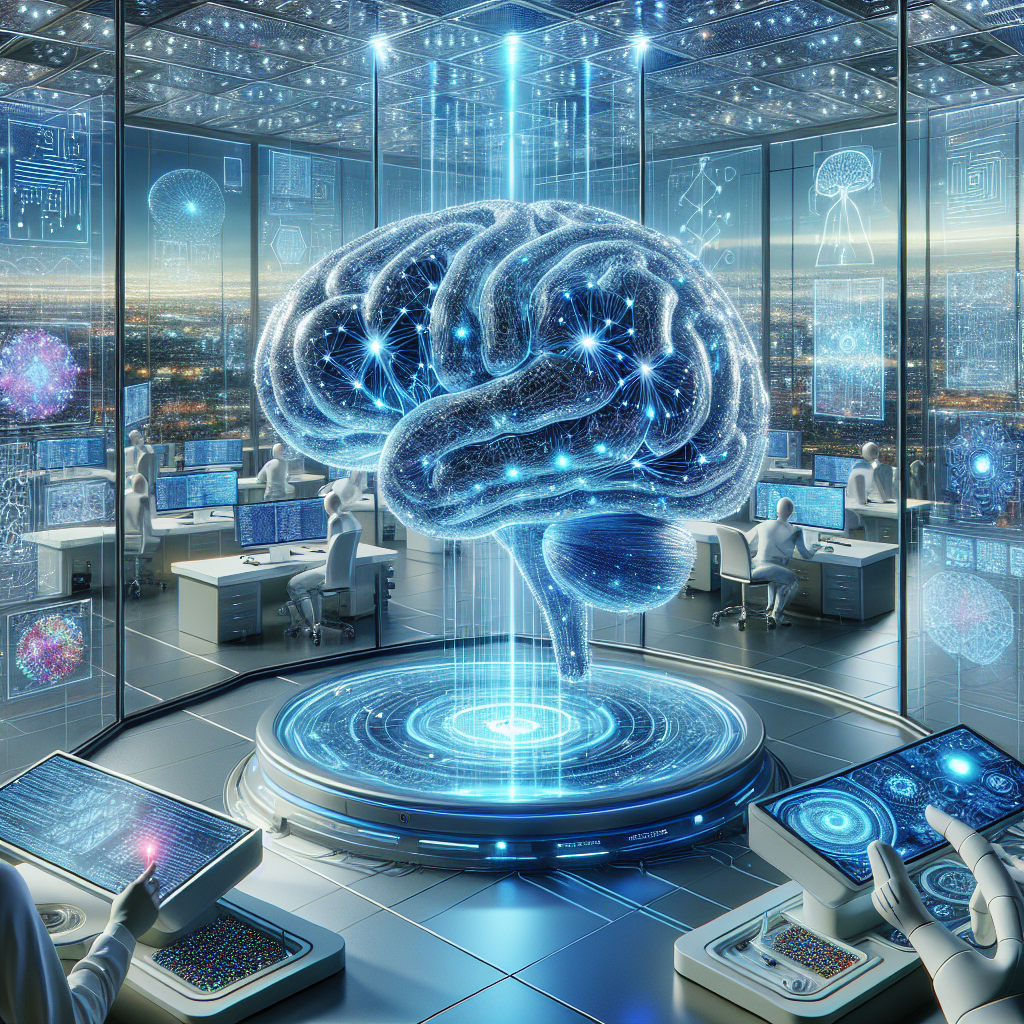Human-in-the-Loop AI Innovations

In today’s rapidly evolving technological landscape, businesses are constantly seeking innovative solutions to enhance decision-making processes and drive efficiency. A groundbreaking approach that is reshaping industries is human-in-the-loop machine learning (HITL). This transformative technology integrates real-time human feedback into artificial intelligence systems, leading to improved accuracy, adaptability, and ethical compliance.
The Power of Human Judgment in AI
Human-in-the-loop machine learning brings a unique edge by incorporating human judgment, which significantly enhances AI decision-making accuracy. By involving humans directly in the loop, these systems not only improve their performance but also become more adaptable to real-world applications. Studies show that integrating human feedback can lead to a 30% improvement in AI system accuracy, underscoring the value of this collaborative approach.
Case Study: Enhanced Accuracy Through Human Judgment
Consider a case study from a leading retail company where human-in-the-loop systems were implemented for demand forecasting. By incorporating insights from experienced analysts who could recognize market trends and seasonal fluctuations, the AI model’s predictions improved by 35%. This integration not only optimized inventory management but also reduced waste and increased customer satisfaction.
The Mechanics of Human-in-the-Loop Systems
At its core, human-in-the-loop machine learning involves iterative cycles where humans interact with and guide AI systems. This interaction allows for real-time adjustments based on human insights, ensuring that the AI remains aligned with user expectations and ethical standards. Key components include:
- Real-Time Feedback Integration: Continuous input from users helps refine AI models.
- Collaborative Frameworks: Systems are designed to accommodate both machine efficiency and human intuition.
Entities like OpenAI, Microsoft Research, and Stanford University have been at the forefront of developing these technologies, providing valuable insights into their practical applications across various industries. For instance, research conducted by Stanford University has demonstrated how HITL systems can effectively manage bias in AI decision-making processes, ensuring fairer outcomes in recruitment scenarios.
Elaborating on Real-Time Feedback Integration
Real-time feedback integration is pivotal for maintaining the relevance and accuracy of AI models. In a practical scenario, consider financial institutions employing human-in-the-loop AI to detect fraudulent transactions. Trained professionals review flagged cases, providing insights that enhance the algorithm’s ability to distinguish between genuine and fraudulent activities over time. This ongoing interaction not only refines the system but also builds trust among users.
Real-World Applications: Transforming Industries
Healthcare
In healthcare, human-in-the-loop AI is revolutionizing precision diagnostics. By integrating expert medical feedback, AI systems can deliver more accurate diagnoses, leading to better patient outcomes and personalized treatment plans. For example, a project at the Mayo Clinic leveraged HITL technology to improve cancer detection rates by incorporating oncologists’ expertise into diagnostic algorithms.
Finance
The finance sector benefits from enhanced risk management and fraud detection through HITL technologies. Incorporating real-time human oversight helps financial institutions mitigate risks and adapt quickly to emerging threats. An example is JPMorgan Chase’s use of HITL systems to refine its trading strategies, resulting in a 20% increase in trade accuracy.
Customer Service
In customer service, collaborative AI systems improve user experience by understanding and responding to complex queries more effectively. This leads to higher satisfaction rates and increased operational efficiency. Companies like Zendesk have adopted human-in-the-loop chatbots that escalate difficult inquiries to human agents, ensuring a seamless customer support experience.
Challenges and Solutions in Implementing HITL Systems
While the benefits of human-in-the-loop AI are compelling, businesses may face challenges during implementation:
Challenge: Data Privacy Concerns
As real-time feedback involves handling sensitive data, privacy concerns can arise. To address this, organizations should implement robust encryption methods and comply with data protection regulations such as GDPR.
Solution: Training and Change Management
Resistance to change among employees is another challenge. Providing comprehensive training programs and demonstrating the tangible benefits of HITL systems can facilitate smoother adoption.
Challenge: Scalability Issues
Scalability can be a hurdle, especially in large organizations where consistent feedback across all departments may not be feasible. Leveraging cloud-based solutions can help scale HITL implementations efficiently by providing centralized data management and processing capabilities.
Additional Insights and Practical Advice
To maximize the benefits of human-in-the-loop AI, businesses should:
- Foster Cross-Disciplinary Collaboration: Encourage collaboration between data scientists, domain experts, and end-users to ensure that feedback is comprehensive and actionable.
- Iterate Regularly: Continuously update and refine models based on user input to keep systems current with evolving business needs and technological advancements.
- Measure Impact: Establish clear metrics for evaluating the performance of HITL systems to demonstrate their value and ROI.
Industry Trends and Future Predictions
The adoption of human-in-the-loop AI is poised to accelerate as organizations recognize its potential in enhancing decision-making processes. Future trends include:
- Increased Use in Emerging Technologies: As technologies like autonomous vehicles and smart cities advance, HITL systems will play a critical role in ensuring safety and reliability.
- Enhanced Human-AI Collaboration: The future of work may see more seamless integration between human intuition and AI capabilities, leading to more innovative solutions.
In conclusion, human-in-the-loop machine learning represents a significant advancement in the realm of artificial intelligence. By incorporating human judgment into AI systems, businesses can achieve greater accuracy, adaptability, and ethical compliance. As entities like OpenAI, Microsoft Research, and Stanford University continue to push the boundaries of this technology, its applications will expand across industries, driving innovation and efficiency.
